








Airlines, Airports and Airliners News 8 to 14 November 2021Google Banner Ad PLETTENBERG BAY AIRPORT LICENCE REINSTATED  Cemair flights to Plettenberg resumed on Friday 12 November. The company recently entered into an agreement with the Bitou Local Municipality to upgrade the airports infrastructure at a cost of R1 million. The airport was downgraded by the Civil Aviation Authority in August because of severe outstanding non-compliances. The CAA last week announced that Plettenberg Bay airport has satisfactorily addressed most of the severe non-compliances has had its Category 4 licence reinstated with immediate effect. The airport's reopening comes just in time for the busy summer season. 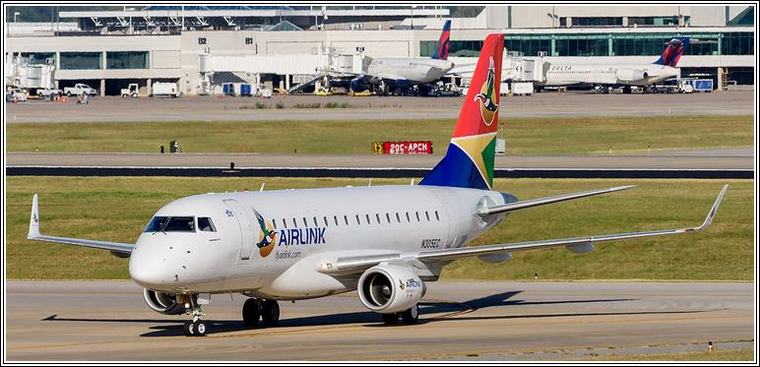 Airlink, the privately owned Southern African regional airline, will implement a company-wide programme involving training, new processes and supply chain interventions to identify and combat illicit wildlife trade. The illegal wildlife trade is valued between USD $50-150 billion (approximately between ZAR730 billion - ZAR2,19 trillion at current exchange rates) per year and is one of the five most lucrative global crimes. Illegal killing and trading of wild animals is a global crisis, with species being hunted to extinction for their horns, skins and teeth. The programme, run by the International Air Transport Association (IATA) and United for Wildlife (UFW), will involve training for all Airlink front-line staff, including cabin crew, check-in, ground handling and cargo personnel across the airline's entire network of South African domestic and Southern African regional destinations. In addition, Airlink is revising its policies and intervening across its entire supply chain to introduce measures designed to thwart the scourge, which is especially acute in Southern Africa, where it continues to destroy biological diversity and decimate species of animals in astonishing numbers. Allied to this, Airlink will also launch a customer awareness campaign for travellers and shippers of airfreight consignments. The programme marks the expansion of Airlink's commitment to combatting illegal wildlife trade under the 2016 Buckingham Palace Declaration and as a member of the United for Wildlife Transport Taskforce. "Airlink took a stand against the illegal wildlife trade by signing the landmark 2016 Buckingham Palace Declaration and becoming a member of the United for Wildlife Transport Taskforce. Now we taking this commitment even further by implementing the global best practices developed under IATA/UFW Illegal Wildlife Trade programme," said Airlink CEO and Managing Director, Rodger Foster. Training, which will commence this month, will be delivered through a series of e-modules, each about an hour long, covering an introduction to the trade, what to look for, how to report it and how to handle wildlife products. Refresher courses will be provided annually. "Our expanding route network facilitates trade and creates new economic opportunities throughout Southern Africa, but with this growth comes a responsibility to protect and preserve the incredible biodiversity and wildlife that makes Southern Africa so unique. Airlink is proud to be at the forefront of this fight to stop the illegal wildlife trade," added Mr Foster. Certification of the programme's implementation and completion of the Illegal Wildlife Trade training modules is subject to an independent audit and will entitle Airlink to display a special roundel as a public hallmark signifying its commitment to stopping illicit wildlife trafficking. 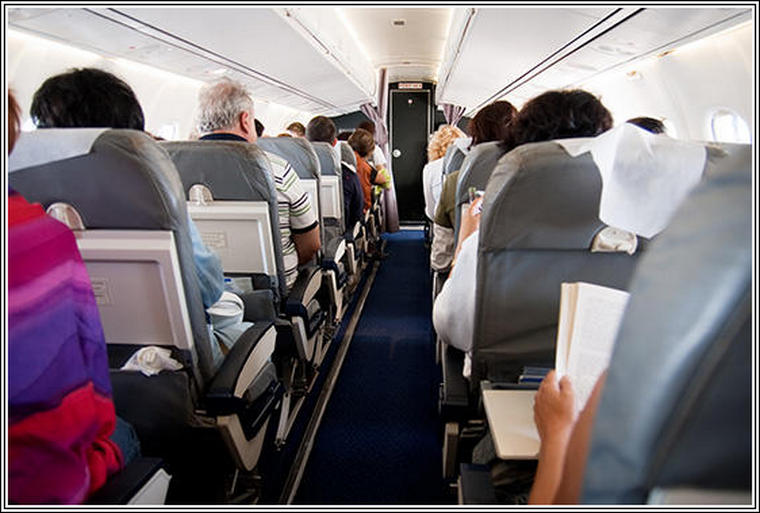 The International Air Transport Association (IATA) announced a moderate rebound in air travel in September 2021 compared to August's performance. This was driven by recovery in domestic markets, in particular China, where some travel curbs were lifted following the COVID-19 outbreaks in August. International demand, meanwhile, slipped slightly compared to the previous month. Because comparisons between 2021 and 2020 monthly results are distorted by the extraordinary impact of COVID-19, unless otherwise noted, all comparisons are to September 2019, which followed a normal demand pattern. Total demand for air travel in September 2021 (measured in revenue passenger kilometres or RPKs) was down 53.4% compared to September 2019. This marked an uptick from August, when demand was 56.0% below August 2019 levels. Domestic markets were down 24.3% compared to September 2019, a significant improvement from August 2021, when traffic was down 32.6% versus two years ago. All markets showed improvement with the exception of Japan and Russia, although the latter remained in solid growth territory compared to 2019. Google Block Ad International passenger demand in September was 69.2% below September 2019, fractionally worse than the 68.7% decline recorded in August. "September's performance is a positive development but recovery in international traffic remains stalled amid continuing border closures and quarantine mandates. The recent US policy change to reopen travel from 33 markets for fully vaccinated foreigners from 8 November is a welcome, if long overdue, development. Along with recent re-openings in other key markets like Australia, Argentina, Thailand and Singapore, this should give a boost to the large-scale restoration of the freedom to travel," said Willie Walsh, IATA's Director General. 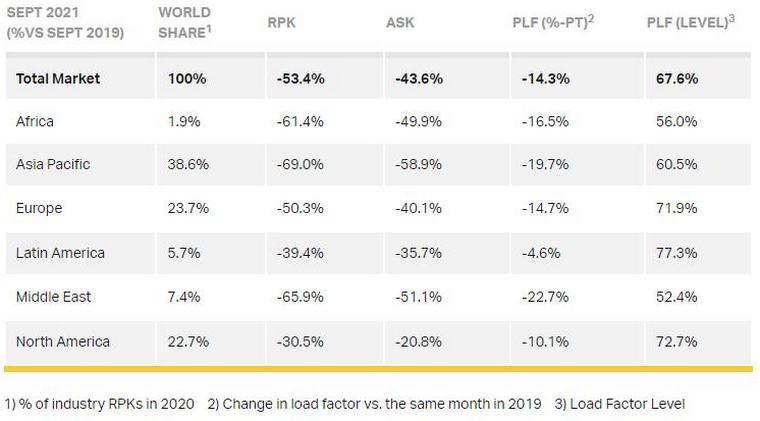 International Passenger Markets European carriers' September international traffic declined 56.9% versus September 2019, down 1 percentage point compared to the 55.9% decrease in August versus the same month in 2019. Capacity dropped 46.3% and load factor fell 17.2 percentage points to 69.6%. Asia-Pacific airlines saw their September international traffic fall 93.2% compared to September 2019, virtually unchanged from the 93.4% drop registered in August 2021 versus August 2019 as the region continues to have the strictest border control measures. Capacity dropped 85.2% and the load factor was down 42.3 percentage points to 36.2%, easily the lowest among regions. Middle Eastern airlines had a 67.1% demand drop in September compared to September 2019, slightly improved over the 68.9% decrease in August, versus the same month in 2019. Capacity declined 52.6% and load factor slipped 23.1 percentage points to 52.2%. North American carriers experienced a 61.0% traffic drop in September versus the 2019 period, somewhat worsened over the 59.3% decline in August compared to August 2019. Capacity dropped 47.6%, and load factor fell 21.3 percentage points to 61.9%. Latin American airlines saw a 61.3% drop in September traffic, compared to the same month in 2019, an upturn over the 62.6% decline in August compared to August 2019. September capacity fell 55.6% and load factor dropped 10.7 percentage points to 72.0%, which was the highest load factor among the regions for the 12th consecutive month. African airlines' traffic fell 62.2% in September versus two years' ago, almost 4 percentage points worse than the 58.5% decline in August compared to August 2019. September capacity was down 49.3% and load factor declined 18.4 percentage points to 53.7%. Google Block Ad Brazil's domestic market sustained its gradual recovery amid positive vaccination progress. Traffic was down 17.3% compared to September 2019 - improved from a 20.7% fall in August. Japan's September domestic traffic was down 65.5%, worsened from a 59.2% decline in August versus August 2019, owing to the impact of restrictions. "Each re-opening announcement seems to come with similar but different rules. We cannot let the recovery get bogged down in complication. The ICAO High Level Conference on COVID-19 agreed that harmonization should be a priority. The G20 declared a commitment to take action to support a recovery with seamless travel, sustainability and digitalization. Now governments must put actions behind these words to realize simple and effective measures. People, jobs, businesses and economies are counting on real progress," said Walsh. IATA's vision for safely re-establishing global connectivity is based on five key principles: Vaccines should be available to all as quickly as possible. Vaccinated travellers should not face any barriers to travel. Testing should enable those without access to vaccines to travel without quarantine. Antigen tests are the key to cost-effective and convenient testing regimes and governments should pay for testing, so it does not become an economic barrier to travel. BRITISH AIRWAYS' CUSTOMERS HAVE ACCESS TO MORE DESTINATIONS ACROSS AFRICA  British Airways' customers will be able to fly to more destinations across Africa, thanks to a new codeshare agreement with Kenya Airways. Customers flying to Nairobi with British Airways will be able to seamlessly connect onto 20 destinations across East and Central Africa, including Douala, Zanzibar, Lusaka, Mombasa, Addis Ababa and Entebbe, as well as offering customers more options to get to popular holiday hotspots, Mauritius and Seychelles. In the reciprocal agreement, customers flying with Kenya Airways to London will now be able to connect onto 26 destinations across the UK and Europe that British Airways operates to, including Glasgow, Madrid, Milan, Amsterdam and Frankfurt. British Airways currently offers four flights a week from London Heathrow to Nairobi, operated by a four class Boeing 777 aircraft, which offers cabins from World Traveller (economy) right up to First (First class) Christopher Fordyce, British Airways' Head of Alliances, said: "After a difficult 20 months with global travel restrictions, it's fantastic to see travel between the UK and Africa resuming. We are really pleased to be able to offer our customers access to even more destinations across the region thanks to our new codeshare agreement with Kenya Airways, making that bucket list trip even easier to plan." Julius Thairu, Chief Commercial and Customer Officer at Kenya Airways said: "We are delighted to secure this strategic codeshare agreement with British Airways to provide our travellers with a seamless journey to and from Europe and Africa. The agreement will increase choices for thousands of passengers and will allow for smooth connectivity to a significant number of new destinations - particularly throughout Africa and Europe. By harnessing our complementary strengths, this agreement will also provide benefits to aid the recovery of international travel and meet the increasing demand." British Airways' Executive Club members will be able to earn Avios and tier points when flying on eligible codeshare routes operated by Kenya Airways. 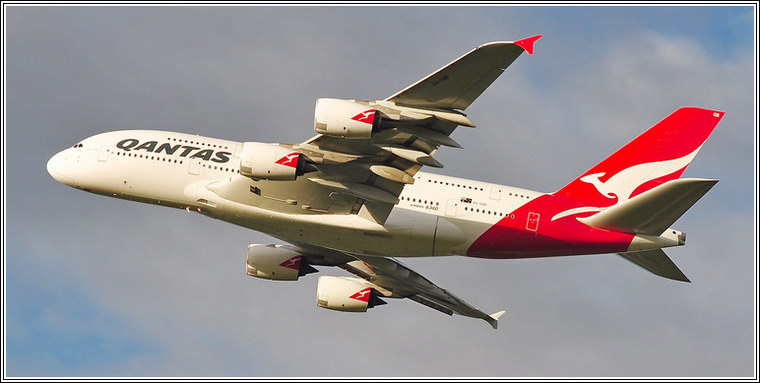 A familiar and hard-to-miss sight will return to Australian skies with one of Qantas' iconic A380 aircraft set to land back in Sydney, 593 days after it departed Australian shores. Hudson Fysh, named after one of Qantas' founders, was expected to touch down at Sydney Airport around 3.00pm more than 19 hours after it departed Dresden, Germany. The aircraft recently underwent scheduled maintenance for a new landing gear, after spending the best part of two years in storage during the COVID-19 pandemic. Its early return comes as the airline gears up for the first two of the superjumbos to return to service in April 2022, following strong demand for international travel, particularly on key routes to Los Angeles and London. Qantas has taken close to half a million domestic bookings in the past two weeks, compared with around 20,000 in a two-week period in August. Jetstar's recent international sale saw 75,000 seats sold in 72 hours. Demand for seats on Qantas' London to Sydney service has been extremely strong, with Aussies reuniting with family and friends in time for Christmas and more flights added as a result. Originally expected to remain in long term storage in the Californian desert until the end of 2023, Qantas has since announced that five A380s with upgraded cabins would return ahead of schedule with two to operate flights to Los Angeles from April 2022 and three to operate flights to London from November 2022. The airline is now working to further accelerate the return of the A380s, with superjumbo flights to London brought forward to July 2022. In addition, a sixth aircraft will arrive before the end of calendar year 2022, with the remaining four A380s expected to return to service by early 2024. Hudson Fysh will undergo additional maintenance checks in Australia before taking to the skies again in coming weeks as part of crew training. Qantas Chief Pilot Captain Richard Tobiano said it was a terrific day, not just for Qantas crew but also passengers who love flying onboard the national carrier's flagship aircraft. Google Block Ad "The A380 is a fantastic aircraft and we are very excited to welcome it home. The early return is symbolic of how quickly demand for international travel has bounced back and this aircraft will play a key role in preparing our crew to return to A380 flying operations in the new year. "Many of our crew have found other jobs during the pandemic doing everything from working in vaccination hubs and hospital wards to driving buses and tractors and painting houses. "Over the next few months, pilots will undergo an extensive retraining period including simulator sessions, training flights and classroom courses to prepare for take-off." While it wasn't flying during the pandemic, the aircraft was cared for by Qantas engineers who carried out regular inspections before it flew to Dresden earlier this year. Six of Qantas' A380s have had an interior redesign featuring new premium upper deck with new supper club style lounge and brand-new seats across the Business Class and Premium Economy cabins, as well as a main deck refresh including new carpet and curtains. The remaining aircraft will be refitted before they return to service. The 485-seat A380 is the only aircraft in the Qantas fleet that offers a First-Class cabin, popular with Frequent Flyers for its comfortable suites with fully lay flat beds, premium Neil Perry multi-course dining experience, award winning Australian wine cellar and Martin Grant designed First Class PJs.  Boeing [NYSE: BA] estimates that air travel within Asia Pacific markets will account for nearly half of global air traffic by 2040, driving a 20-year demand for 17,645 new airplanes valued at $3.1 trillion. To support its commercial aviation industry, Asia-Pacific countries also will require aftermarket services valued at $3.7 trillion. Boeing provided the data in its 2021 Commercial Market Outlook (CMO), the company's long-term forecast of demand for commercial airplanes and services. The Asia Pacific region has diverse air travel markets, including mature economies in Northeast Asia and Oceania as well as rapidly growing aviation markets in China, South Asia and Southeast Asia. With the travel recovery enabled by rising COVID-19 vaccination, Asia Pacific carriers are well-positioned to capitalize on recovering business and leisure travel as well as air cargo transportation, according to Boeing. "We have seen strong resilience in Asia Pacific traffic when restrictions are lifted and passengers feel confident about travel," said Darren Hulst, Boeing vice president of Commercial Marketing. "Carriers with efficient and versatile fleets will be positioned to meet passenger needs and air freight demand with airplanes that reduce fuel use, emissions and operating costs." Boeing's CMO analysis addresses 20-year demand for the five regions within Asia Pacific: Southeast Asian countries seeing rapid economic growth will also see fleet growth and passenger traffic well above global averages. Low-cost carriers are forecast to expand intra-regional networks with single-aisle jets, while open skies and trade agreements will enable carriers to invest in fuel-efficient widebodies to serve long-haul routes. Southeast Asia is forecast to need 4,465 new airplanes valued at $765 billion and commercial aviation services valued at $790 billion by 2040. In Northeast Asia, mature economies will continue to support a balanced air travel market across domestic, regional and long-haul travel segments. Fleet replacement will account for nearly 75% of new deliveries as airlines look to improve sustainability and fleet versatility. The region is expected to need 1,385 new airplanes valued at $310 billion as well as services valued at $555 billion in the next 20 years. In Oceania, commercial aviation serves as critical transportation infrastructure across long distances and island nations. Domestic and regional travel accounting for 80% of passenger traffic will drive single-aisle demand, while versatile widebody jets such as the 787 Dreamliner will support long-haul and international network development. Oceania is projected to need 785 new jets valued at $135 billion and services valued at $165 billion by the end of the forecast period. Boeing previously released its China CMO forecast. The South Asia forecast will be highlighted in coming months. The 2021 CMO includes these projections for Asia Pacific through 2040: Single-aisle jets will account for nearly 13,500 deliveries, about three-quarters of demand in terms of units. Widebody jets including passenger and cargo models will total nearly 3,800 airplanes. The cargo fleet will more than triple to 1,160 airplanes, including new and converted models, to support diversifying global supply chains and meet e-commerce demand. The Asia Pacific cargo fleet is expected to roughly equal North America's cargo fleet by 2040. Tied to economic and fleet growth, demand for maintenance, repair, overhaul and modifications account for a majority of projected commercial aviation services demand. Digital solutions, analytics and training services also will support the Asia Pacific fleet. Boeing's 2021 Pilot and Technician Outlook (PTO) forecasts that the region will require nearly 820,000 new aviation personnel, including more than 230,000 pilots and nearly 250,000 technicians and 340,000 cabin crew members. 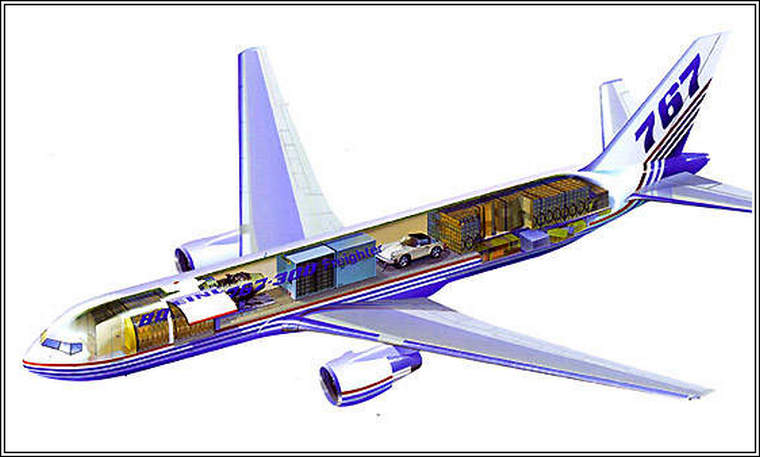 Air Transport Services Group, Inc. (Nasdaq: ATSG), the world's largest lessor of 767-300 converted freighters, has contracted with Boeing [NYSE: BA] for the conversion of four aircraft to 767-300 Boeing Converted Freighters (BCF). "Our continued confidence in the 767-300 platform, now coupled with the services and support of the OEM, reinforces our commitment to deliver best-in-class reliable services to our customers," said Mike Berger, chief commercial officer of ATSG. "We're proud to partner with Boeing as we expand our fleet to meet growing demand and look forward to future growth together." The 767-300BCF now has more than 100 orders and commitments from customers around the globe, providing widebody converted freighter capability to meet growing market demand and building on a record year for customer orders of Boeing's family of freighters. "We are honoured that ATSG has decided to make the 767-300BCF an integral part of their fleet expansion strategy, supporting customers looking to capitalize on strong e-commerce demand," said Jens Steinhagen, director of Boeing Converted Freighters. "As the OEM, Boeing has the original design data, robust supply chains and dependable delivery schedules that benefit BCF customers such as ATSG. With that OEM advantage, we stand ready to meet ATSG's needs by bringing forward market-leading 767-300BCFs into its fleet." ATSG is a global leader in cargo leasing, operating a fleet of 106 Boeing aircraft, including more than ninety 767 converted freighters. Boeing has more than 40 years of successful experience in passenger-to-freighter conversions, relying on original design data and a deep understanding of the needs of the air cargo industry to deliver a superior, integrated product, including fully integrated manuals and world-class technical support. Boeing Converted Freighters also come with the advantage of being associated with the industry's largest portfolio of services, support and solutions.  In the six weeks since the U.S reopening was announced, Delta has seen a 450% increase in international point-of-sale bookings versus the six weeks prior to the announcement. Many international flights are expected to operate 100% full with high passenger volume throughout the following weeks. The reopening positively impacts customers in 33 countries around the world, with Delta serving 10 of these nonstop and more via its global hubs in connection with its partners, including Air France, KLM and Virgin Atlantic. The strong demand is reflected across both leisure and business travellers to popular destinations such as New York, Atlanta, Los Angeles, Boston and Orlando. In total, the airline will operate 139 flights from 55 international destinations in 38 countries landing in the U.S. on Nov. 8, offering more than 25,000 seats. As consumer confidence in travel returns, Delta is increasing flights this winter from key European cities including London-Boston, Detroit and New York-JFK, Amsterdam-Boston, Dublin-New York-JFK, Frankfurt-New York-JFK and Munich-Atlanta. Atlanta, Delta's hometown airport, remains its busiest international hub with 56 daily departures to 39 international destinations. It is followed by the most-visited U.S. city, New York-JFK, which has 28 daily departures to 21 international cities. Google Block Ad The milestone reopening provides a boost to global economies while simultaneously marking the start of the recovery of Delta's international business. The airline reported this summer that its U.S. domestic leisure business has already rebounded to 2019 levels, but ongoing border restrictions have prevented a meaningful recovery across the globe. International inbound travel to the U.S. contributed $234 billion in export income to the U.S. economy, generated a trade surplus of $51 billion and directly supported 1.2 million American jobs in 2019*. ENTRY REQUIREMENTS Foreign nationals will be permitted to enter the U.S. with proof of vaccination and a negative COVID-19 test taken within three days of departure. Non-vaccinated foreign nationals may enter the U.S. only if they meet criteria for very limited exceptions and commit to post-arrival testing, quarantine and vaccination. Customers must also provide details to meet U.S. contact tracing requirements. More information on entry requirements is available at Delta's Travel Planning Centre and through official U.S. government resources. 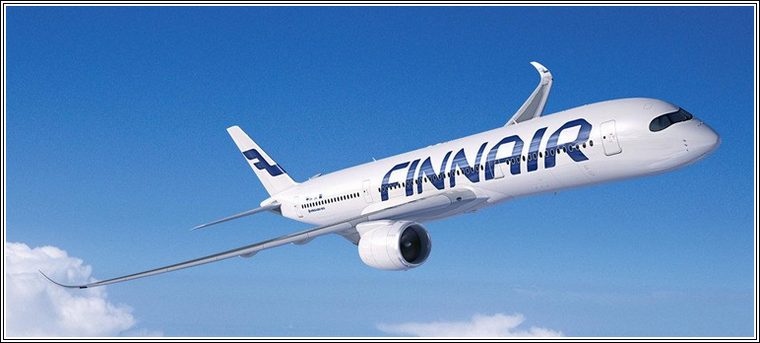 Finnair is preparing for the continued expected gradual opening of Asia and plans to serve nearly 100 destinations in Asia, the US and Europe during the summer season, which begins on 27 March 2022. Finnair will open new long-haul routes to Busan in South Korea, Tokyo Haneda, Dallas in the US, and will also have Sapporo as a summer destination for the first time. "We look forward to the world continuing opening again," says Ole Orvér, Chief Commercial Officer, Finnair. "Before the pandemic, Japan was our single largest market outside our home market Finland and we look forward to returning to all our five destinations in Japan. We are also opening a new route to Busan in South Korea, demonstrating our continuous commitment to offering the best and most sustainable connections between Europe and Asia via our Helsinki hub." "We are also pleased to strengthen our network in the US by adding Dallas as a new destination. Our customers will be able to enjoy great connections to other cities in North America through the extensive network of our alliance partner, American Airlines," says Ole Orvér. If travel restrictions allow, Finnair will resume service to all the five destinations in Japan it served before the pandemic - Tokyo, Osaka, Nagoya, Fukuoka and Sapporo - and launch a new service to Tokyo's Haneda Airport. Altogether, Finnair will fly up to 40 weekly flights between Helsinki and Japan in summer 2022. Finnair flies daily to Tokyo Narita and Haneda, offering a total of 14 weekly frequencies to the capital of Japan. Finnair also flies daily to Nagoya and Osaka and will introduce double dailies to Osaka in June. Finnair's Sapporo route will be introduced for the summer season for the first time with two weekly frequencies while Fukuoka in Southern Japan is served with three weekly flights. Finnair connects customers to key Asian megacities, flying to Shanghai and daily to Hong Kong, Seoul, Singapore and Bangkok. Finnair offers daily flights to Delhi as of June. The new Busan route in South Korea will be launched in March with three weekly frequencies. In North America, Finnair will fly to Chicago, Los Angeles and New York, and open a route to Dallas as a new destination. Dallas will be added to the network as of 7 February 2022 and will be operated four times a week, with excellent connections to Finnair's partner American Airlines' network. As intercontinental traffic grows, Finnair will also strengthen its European network from Helsinki with smooth connections to more than 70 European cities, including new destinations Zagreb and Larnaca. Finnair offers double daily flights to cities like Amsterdam, Düsseldorf, Hamburg, Vienna, Zürich, Gdansk and Milan and even more daily frequencies to Paris, London, Berlin, Warsaw, Brussels, St Petersburg as well as the Scandinavian and Baltic cities. The Helsinki Airport is expanding, with the new Terminal 2 entrance, arrivals hall and travel centre with the new parking and public transportation arrangements opening in December 2021 and new security control and check-in area opening in summer 2022. The expansion of the airport further supports the Finnair customer experience with smooth and reliable transfers at Helsinki. 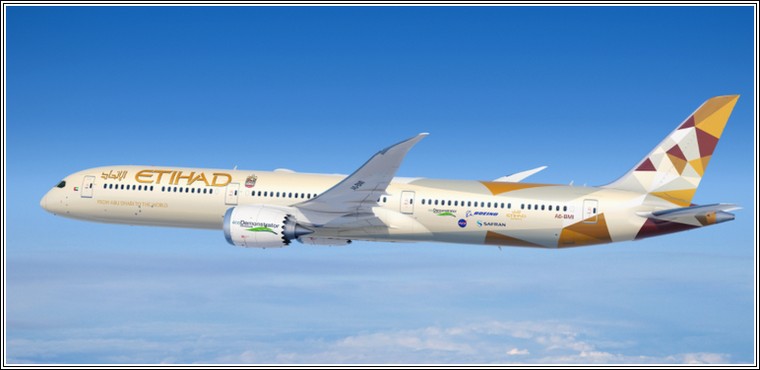 Etihad Airways recently operated its most sustainable flight ever, leveraging the learnings and efficiencies developed over the last two years of its comprehensive sustainability programme to reduce carbon emissions (CO2) by 72% in absolute terms compared to the equivalent flight operated in 2019. The London Heathrow to Abu Dhabi flight is part of the Etihad Greenliner Programme - a two-year partnership between Etihad and Boeing using Etihad's Boeing 787 fleet as a test bed for sustainability improvements in partnership with organisations across the industry. It required huge collaboration across the aviation ecosystem to deliver a sustainable in-flight product, coordination with airspace management for optimised flight routing, new technology flight deck tools, sustainable aviation fuel (SAF), contrail reduction and airport handling processes. In an industry-first, EY20 was the first commercial flight to explore contrail-avoidance. Working with UK-based SATAVIA, the team identified potential areas of ice super-saturated regions in the atmosphere where harmful contrails are likely to form and the flight route was adjusted to avoid these areas. Based on the original and adjusted flight plan, the strategy avoided the production of approximately 64 tonnes of CO2e, with a fuel penalty of only 100kg, or 0.48 tonnes CO2. The contributions covered three phases, planning, in-flight and post-flight. This included preparing the aircraft, engines and route planning systems to optimise take-off, en-route and landing flight paths and trajectories, minimising contrail formation, working with our guests to reduce their luggage and rewarding those that travelled light. Etihad provided catering that was appropriately sourced and served on sustainable crockery and with light-weight cutlery. The crockery itself is part of a circular recycling process where they are returned to the manufacturer at the end of their serviceable life and ground down to its raw material and remade. Guests were also provided with environmentally friendly plant-based water bottles and limited-edition tote bags from upcycled aircraft materials. 80% of all single use plastics were eliminated. The data gathered from the aircraft's sensors was added to Etihad's growing database on flight performance and analysed using tools from Greenliner partner, GE Digital to improve understanding of flight performance and allow quick recognition of unsustainable activities. Douglas added: "The entire emissions reduction we achieved on this flight was through the operational steps and efficiencies employed and did not rely on off-sets. Nonetheless, off-sets, if done rigorously, also play a part in our sustainable future. The UAE has a large stock of mangroves which present nature-based solutions. In addition to their ability to reduce pollution from water and the atmosphere, if maintained properly, mangrove forests have the potential to avoid the release of CO2 into the atmosphere. That is why each guest on board this Etihad flight will have a tree adopted for them in Abu Dhabi's Jubail Island Mangroves plantations. Adoption involves the maintenance and reforestation of existing forests with carbon storage potential. This is an important initiative for greening the UAE." "EY 20 Sustainable Flight brought together a long list of small changes that had been developed over the past two years under the Greenliner Programme, which was designed to identify opportunities that are available today to reduce emissions, rather than waiting for future technologies. Our single greatest learning from the past two years has been that even when solutions are available, they are not easily deployed on a regular basis due to constraints throughout the entire aviation eco-system. What was demonstrated on EY20 was the art of the possible; the next step is to work on how these can be deployed sustainably," said Al Bulooki. "That is the challenge Etihad faces and the challenge that Etihad accepts in collaboration with our partners. Etihad is determined to operate with sustainability as a core principle alongside safety and security and is looking forward to many more of these small steps making a big difference." PLEASE GO TO www.youtube.com/channel/UCCuRVZAGodT6sztTeXBGeMw and subscribe to our YouTube channel Google Banner Ad |
                     |
 |
 |

Copyright © Pilot's Post PTY Ltd
The information, views and opinions by the authors contributing to Pilot's Post are not necessarily those of the editor or other writers at Pilot's Post.